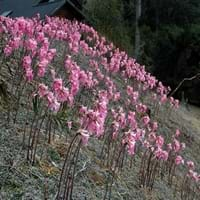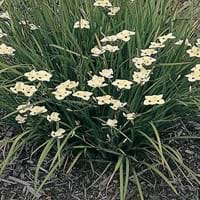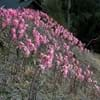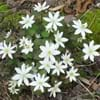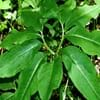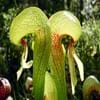Life Span
Annual
Perennial
Type
Bulb or Corm or Tuber
Tender Perennial
Origin
South Africa
Southern Africa
Types
Barberton, Cape Town, Elator
Not Available
Habitat
Warmer regions
Desert, Mediterranean region, Subtropical climates, Temperate Regions
USDA Hardiness Zone
6-10
8-10
Sunset Zone
21,22
H1, H2, 8, 9, 12, 13, 14, 15, 16, 17, 18, 19, 20, 21, 22, 23, 24
Habit
Clump-Forming
Clump-Forming
Flower Color
Pink, Rose
Yellow, Light Yellow, Brown
Flower Color Modifier
Bicolor
Bicolor
Fruit Color
Not Available
Green, Brown
Leaf Color in Spring
Dark Green
Green, Gray Green
Leaf Color in Summer
Light Green
Green, Gray Green
Leaf Color in Fall
Several shades of Green
Green, Gray Green
Leaf Color in Winter
Light Green
Light Green
Leaf Shape
Narrow
Grass like
Plant Season
Summer
Spring, Summer, Fall, Winter
Sunlight
Full Sun, Partial Sun, Partial shade
Full Sun, Partial Sun, Partial shade
Growth Rate
Medium
Medium
Type of Soil
Loam, Sand
Clay, Loam, Sand
The pH of Soil
Acidic, Neutral
Acidic, Neutral, Alkaline
Soil Drainage
Well drained
Average
Bloom Time
Summer, Late Summer
Indeterminate
Tolerances
Drought
Drought
Where to Plant?
Container, Ground, Pot
Container, Ground, Pot
How to Plant?
Seedlings
Rhizome division, Seedlings
Plant Maintenance
Medium
Medium
Watering Requirements
Average Water Needs, Do Not over Water, Requires regular watering
Requires regular watering
In Summer
Lots of watering
Lots of watering
In Spring
Moderate
Moderate
In Winter
Average Water
Average Water
Soil pH
Acidic, Neutral
Acidic, Neutral, Alkaline
Soil Type
Loam, Sand
Clay, Loam, Sand
Soil Drainage Capacity
Well drained
Average
Sun Exposure
Full Sun, Partial Sun, Partial shade
Full Sun, Partial Sun, Partial shade
Pruning
Remove damaged leaves, Remove dead branches, Remove dead leaves
Remove dead leaves
Fertilizers
All-Purpose Liquid Fertilizer
Any balanced general purpose fertilizer
Pests and Diseases
Red blotch
Nematodes, Scale
Plant Tolerance
Drought
Drought
Flower Petal Number
Single
Single
Foliage Texture
Medium
Medium
Foliage Sheen
Glossy
Matte
Attracts
Butterflies, Hummingbirds
Bees, Birds, Butterflies
Allergy
Abdominal pain, Depression, Diarrhea, Toxic, Vomiting
Skin irritation
Aesthetic Uses
Showy Purposes
Showy Purposes
Beauty Benefits
Not Available
Not Available
Edible Uses
Insignificant
No
Environmental Uses
Air purification
Ethnobotanic
Medicinal Uses
Not Available
No Medicinal Use
Part of Plant Used
Flowers
Root
Other Uses
Showy Purposes
Roots were worn to protect and strengthen the wearer, Used as Ornamental plant
Used As Indoor Plant
Insignificant
No
Used As Outdoor Plant
Yes
Yes
Garden Design
Container, Cutflower, Feature Plant, Houseplant, Mixed Border, Rock Garden / Wall
Bog Garden, Container, Feature Plant, Mixed Border, Tropical, Water Gardens
Botanical Name
AMARYLLIS belladonna
DIETES bicolor
Common Name
August Lily, Belladonna Lily, Naked Lady
African iris, Fortnight lily
In Hindi
Belladonna Lily plant
African Iris
In German
Belladonna Lily Pflanze
Afrikanische Iris
In French
Belladonna Lily plante
African Iris
In Spanish
planta de lirio de belladona
Iris africano
In Greek
φυτό Belladonna Lily
Αφρικανική Iris
In Portuguese
planta Belladonna Lily
Iris africano
In Polish
Belladonna Lily roślin
Afryki Iris
In Latin
Lilium planta belladonna
African Iris
Phylum
Magnoliophyta
Magnoliophyta
Class
Liliopsida
Magnoliopsida
Order
Liliales
Asparagales
Family
Amaryllidaceae
Iridaceae
Clade
Angiosperms, Monocots
Angiosperms, Monocots
Tribe
Not Available
Irideae
Subfamily
Amaryllidoideae
Iridoideae
Number of Species
Not Available
Not Available
Properties of Belladonna Lily and African Iris
Wondering what are the properties of Belladonna Lily and African Iris? We provide you with everything About Belladonna Lily and African Iris. Belladonna Lily doesn't have thorns and African Iris doesn't have thorns. Also Belladonna Lily does not have fragrant flowers. Belladonna Lily has allergic reactions like Abdominal pain, Depression, Diarrhea, Toxic and Vomiting and African Iris has allergic reactions like Abdominal pain, Depression, Diarrhea, Toxic and Vomiting. Compare all the properties and characteristics of these two plants. Find out which of these plant can be used as indoor plant. If you are interested to decorate your house and garden, find out aesthetic uses, compare them and select the plant which will beautify your surrounding. Along with beautification, try comparing medicinal and edible uses of Belladonna Lily and African Iris and you can choose the plant having best and most benefits.
Season and Care of Belladonna Lily and African Iris
Season and care of Belladonna Lily and African Iris is important to know. While considering everything about Belladonna Lily and African Iris Care, growing season is an essential factor. Belladonna Lily season is Summer and African Iris season is Summer. The type of soil for Belladonna Lily is Loam, Sand and for African Iris is Clay, Loam, Sand while the PH of soil for Belladonna Lily is Acidic, Neutral and for African Iris is Acidic, Neutral, Alkaline.
Belladonna Lily and African Iris Physical Information
Belladonna Lily and African Iris physical information is very important for comparison. Belladonna Lily height is 75.00 cm and width 20.00 cm whereas African Iris height is 61.30 cm and width 30.50 cm. The color specification of Belladonna Lily and African Iris are as follows:
Belladonna Lily flower color: Pink and Rose
Belladonna Lily leaf color: Dark Green
African Iris flower color: Yellow, Light Yellow and Brown
- African Iris leaf color: Green and Gray Green
Care of Belladonna Lily and African Iris
Care of Belladonna Lily and African Iris include pruning, fertilizers, watering etc. Belladonna Lily pruning is done Remove damaged leaves, Remove dead branches and Remove dead leaves and African Iris pruning is done Remove dead leaves. In summer Belladonna Lily needs Lots of watering and in winter, it needs Average Water. Whereas, in summer African Iris needs Lots of watering and in winter, it needs Average Water.
